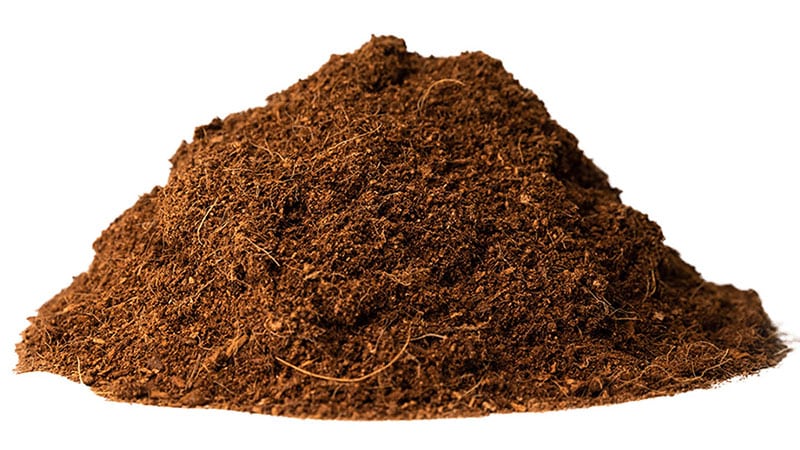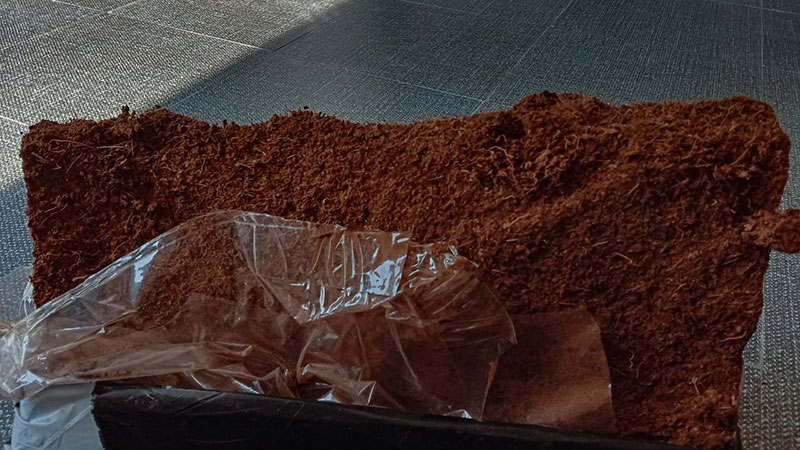Welcome to this post, where we delve into the fascinating world of buffering coco coir. Whether you’re a seasoned gardener or just beginning your journey into the world of horticulture, understanding the importance of buffering coco coir is crucial for cultivating thriving plants. In this comprehensive guide, we’ll explore the ins and outs of this essential process, uncovering its benefits, techniques, and practical tips for achieving optimal results in your gardening endeavors. So, grab your gardening gloves, and let’s embark on a journey to unlock the full potential of buffered coco coir!
What is buffering coco coir?
Buffering coco coir is a fundamental step in preparing the substrate for gardening, ensuring optimal conditions for plant growth. This process involves washing the coco coir with calcium and magnesium solution before its use as a growing medium.
The primary purpose of buffering is to adjust the coco coir’s pH levels and salt content, thereby creating an environment conducive to healthy plant development. Coco coir, being inherently nutrient-poor, requires supplementation to meet the nutritional needs of plants. By subjecting it to a calcium-magnesium solution, growers can address this deficiency by providing essential nutrients.

Moreover, buffering facilitates the removal of excess sodium and potassium from the coco coir while retaining other vital nutrients. This is particularly important as cococoir naturally contains a significant amount of potassium. Through buffering, growers can effectively regulate the salt content, mitigating the risk of salt accumulation around plant roots as water evaporates from the growing medium.
In essence, buffering coco coir is a comprehensive process that enhances nutrient availability and creates an ideal growing environment by balancing pH levels and minimizing salt accumulation, ultimately supporting healthy plant growth and productivity.
Five benefits of using buffered cococoir
Utilizing buffered coco coir in your garden presents many advantages that cater to both the flourishing of your plants and the preservation of the environment. Below are detailed explanations of the key benefits:
Outstanding Water Retention
Buffered coco coir exhibits remarkable water retention capabilities, allowing it to retain moisture over extended durations. This ensures a consistent water supply for your plants, mitigating the risks of underwatering and overwatering. Improved water retention not only fosters plant health but also reduces the frequency of watering sessions, thereby saving valuable time and effort in garden maintenance.
Optimal Aeration
Coco coir boasts excellent porosity, facilitating ample oxygen supply to the roots of your plants. The substrate’s airy structure promotes proper air circulation, preventing root suffocation due to waterlogging and encouraging robust root development. Enhanced aeration is also a preventive measure against root rot and various fungal diseases, further bolstering plant vitality and resilience.

Improved Nutrient Absorption
Buffered coco coir possesses a high cation exchange capacity (CEC), indicating its strong affinity for retaining and exchanging nutrients. This attribute enables plants to efficiently absorb and utilize available nutrients, resulting in healthier and more productive growth. Additionally, the substrate’s neutral pH ensures optimal nutrient availability in the soil, optimizing nutrient uptake by the plants and fostering their overall well-being.
Sustainability and Eco-friendliness
Harvested from renewable coconut husks that would otherwise be discarded, buffered coco coir represents a sustainable resource that reduces waste. By opting for buffered coco coir, you actively choose an environmentally friendly alternative to conventional soil. Furthermore, it is devoid of harmful chemicals and pesticides, establishing a safe and organic growing environment conducive to plant health and ecological balance.
Versatility and Ease of Use
Buffered coco coir applies to various gardening setups, including container gardening, raised beds, and hydroponic systems. Its lightweight and compact nature facilitates convenient handling and transportation, enhancing gardening efficiency. Whether utilized as a standalone growing medium or blended with other components to create customized mixes, coco coir adapts seamlessly to diverse gardening needs, ensuring optimal plant growth and development conditions.
When does buffer coco coir
Buffering coco coir becomes imperative under several circumstances to ensure optimal performance as a growing medium in hydroponics or gardening. Firstly, when utilizing coco coir for these purposes, buffering is essential unless the coco coir has been pre-treated or pre-buffered before purchase. This preparatory step is indispensable to render coco coir suitable for fostering plant growth effectively.

Moreover, buffering is equally necessary if coco coir is being reused from a previous growing cycle. Repeated use can deplete essential nutrients and alter the pH balance of the coco coir, necessitating buffering to restore its viability as a growing medium.
To ascertain whether buffering is required, growers should assess the coco coir’s pH level and related parameters. If uncertain, examining the packaging for buffering information or consulting reputable suppliers is recommended. Acquiring high-quality coco coir products from trustworthy sources ensures reliability and efficacy in gardening endeavors. This underscores the importance of informed purchasing decisions in optimizing plant cultivation practices.
How to buffer coco coir properly
Buffering coco coir is a meticulous process that ensures the substrate is primed for optimal plant growth. Here’s a comprehensive guide detailing each step:
Step 1: Rinse the Coco Coir
Begin by thoroughly rinsing the Coco Coir to eliminate any dust and debris. Place the coir in a large container or tub with small drainage holes and run water through it until it is clear, indicating that impurities have been removed.
Step 2: Check the pH Level
Utilize a pH testing kit to assess the pH level of the soaked coco coir. The ideal pH range for coco coir falls between 5.5 and 6.5, creating a neutral environment conducive to the growth of various plant species.
Step 3: Prepare the Buffering Solution
Prepare a buffering solution using either calcium nitrate or dolomite lime in a separate container. Follow the instructions provided on the product packaging to determine the appropriate dosage. The buffering solution eliminates excess salts and balances the calcium-to-magnesium ratio within the coco coir.

Step 4: Soak the Coco Coir
Submerge the rinsed coco coir in a clean container or tub, ensuring it is fully immersed in the buffering solution. Allow the coir to soak for a minimum of 24 hours. During this period, the coco coir absorbs the solution, facilitating the removal of salts and enhancing its capacity to retain nutrients.
Step 5: Recheck the pH Level
After the soaking duration, retest the pH level of the coco coir using the pH testing kit. If the pH level remains outside the desired range of 5.5 to 6.5, repeat the buffering process until the optimal pH level is achieved.
Step 6: Rinse Thoroughly
Drain the excess buffering solution from the container and rinse the coco coir meticulously with water. This step is crucial to eliminate any residual salts or buffering solution from the substrate, ensuring it remains uncontaminated.
Step 7: Remove Excess Water
Once rinsed, gently squeeze out any surplus water from the coco coir. Aim for a moist consistency without allowing it to become overly saturated. Avoid compressing or compacting the coir excessively, which may impede its water retention and aeration properties.
Step 8: Fluff and Loosen
To promote optimal drainage and root growth, fluff and loosen the coco coir to achieve a light and airy texture. This step enhances the substrate’s ability to provide adequate oxygen to the roots while facilitating nutrient uptake.
Step 9: Utilize the Buffered Coco Coir
Your meticulously buffered coco coir is now ready for use as a superior growing medium, providing an ideal environment for healthy plant development and robust yields in your garden.
Guidelines on Utilizing Buffered Coco Coir
Using buffered coco coir in your gardening endeavors can yield exceptional results, provided you follow these detailed guidelines to maximize the benefits of this versatile growing medium:
Select the Suitable Type:
Coco coir is available in various forms, such as compressed bricks, loose fibers, and pre-mixed blends. Assess your gardening requirements before choosing the type that best suits your needs. Compressed bricks are convenient for storage and transportation, while loose fibers offer more flexibility in volume and ratio. Consider Coco Bliss, which boasts minimal fibers based on the preference of most growers.

Customize with Other Ingredients:
While buffered coconut coir can serve as a standalone growing medium, blending it with other ingredients can enhance its performance. Incorporating perlite or vermiculite improves drainage, while compost or worm castings enrich nutrient content. Experiment with different ratios to tailor the mix to your plants’ requirements.
Ensure Adequate Drainage:
Despite its excellent water retention properties, coco coir requires proper drainage to prevent waterlogging. Ensure your pots or containers have drainage holes, and consider layering the container bottom with small stones or pebbles to enhance drainage efficiency.
Monitor Watering Regimen:
Due to its moisture-retaining capability, monitor watering frequency closely to avoid overwatering, which can lead to root rot and fungal diseases. Allow the top layer of coco coir to dry slightly between watering sessions to balance moisture retention and aeration.
Provide Supplementary Nutrients:
While coco coir contains some natural nutrients, supplementing with fertilizers or organic amendments is essential. Choose a balanced fertilizer tailored to your plant’s nutritional needs and regularly assess nutrient levels in the coco coir to ensure optimal plant nourishment.
Maintain Optimal pH Levels:
Coco coir typically maintains a neutral pH suitable for various plants. However, pH levels should be monitored periodically as organic matter breakdown can make it acidic over time. Adjust pH using dolomite lime to facilitate plants’ optimal nutrient uptake.

Embrace Reusability:
Coco coir is a sustainable growing medium that can be reused multiple times. After each growing cycle, remove plant roots and debris and rinse the coco coir thoroughly. Re-buffer if necessary before reusing it for subsequent plantings. Embracing reusability minimizes waste and sustains the substrate’s nutrient content.
By adhering to these comprehensive tips, you can unlock the full potential of buffered coco coir, creating an ideal garden environment conducive to vibrant plant growth and flourishing greenery.
Final thought
In conclusion, buffering coco coir is not just a routine step in gardening; it’s a vital practice that lays the foundation for flourishing plants and sustainable cultivation. By understanding the significance of this process and implementing it with care, gardeners can create an optimal growing environment that fosters healthy root development, nutrient uptake, and overall plant vitality. So, as you embark on your gardening journey, remember the transformative power of buffered coco coir and enjoy the abundant harvests and vibrant blooms that result from your dedicated efforts. Happy gardening!

